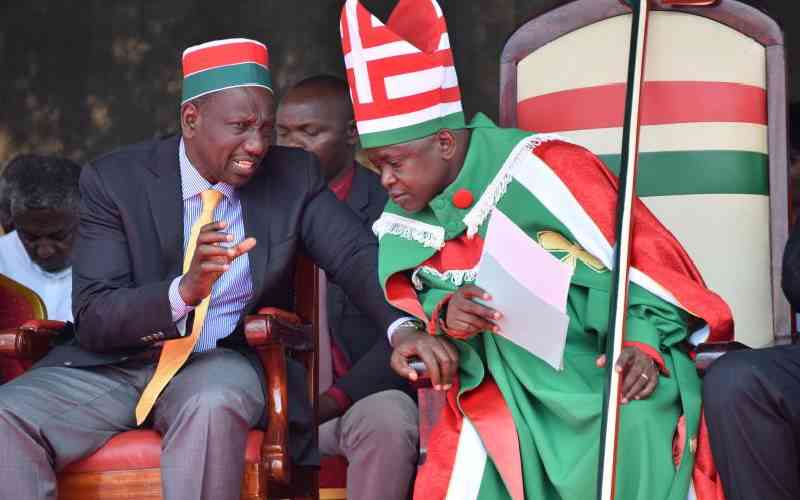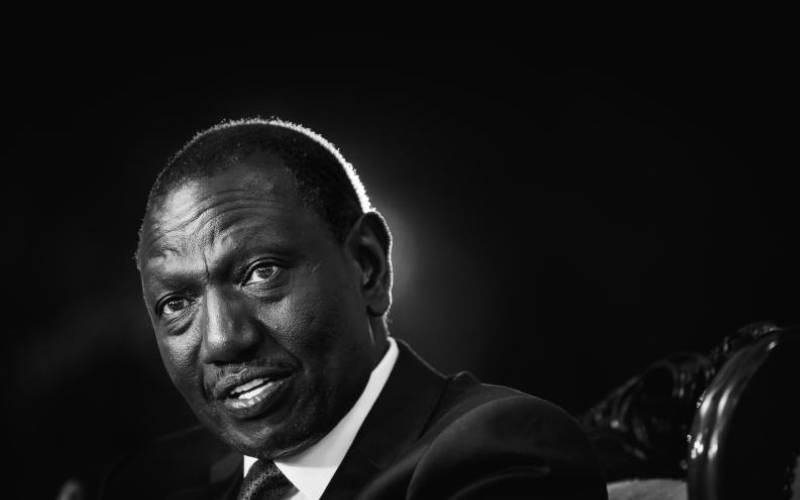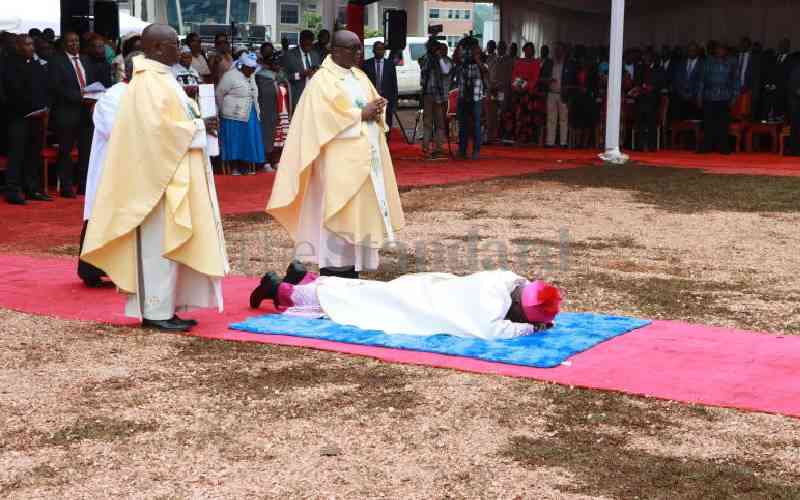 |
|
Kenyan delegation have lunch during the International Criminal Court trial against Deputy President William Ruto at The Hague, Tuesdsay. [PHOTO: PIUS CHERUIYOT/STANDARD] |
By FELIX OLICK
The Hague: The first witness in the ICC case against Deputy President William Ruto gave a harrowing account of the attack on Kiambaa Church where 30 women and children were burnt to death.
The female witness’s testimony captured the cruelty of the January 1, 2008 attacks in which assailants threw her baby into the raging inferno at the Kiambaa Church.
At one point, the witness — who narrated how she narrowly escaped with her life — broke down, overcome by the horrific memories, prompting the prosecution counsel, Anton Stynberg, to seek a brief adjournment.
Stynberg told Trial Chamber V judges that the witness was visibly upset and needed some time off to regain composure.
“I know this is a difficult experience you are going through. So we are going to take a break so that you can recover and continue after lunch,” said presiding Judge Chile Eboe-Osuji as he temporarily adjourned the proceedings.
The trial lawyer led the witness in her evidence-in-chief, intended to underscore the gravity of the crimes committed against civilians during the 2008 post-election violence.
Ruto and his co-accused, radio journalist Joshua arap Sang, face crimes against humanity charges. They have denied murder, deportation or forcible transfer of population and persecution charges.
The witness recounted how Kikuyu women and children, who had sought refuge at the church, after fleeing marauding militia who had burnt down homes, were consumed in the fierce fire. She estimated the attackers to have been more than 3,000 youths who were armed with bows and arrows and whom she identified as Kalenjin by their dialect.
Victims wailed
The arsonists barricaded the main entrance of the church before setting it ablaze. She estimated approximately 1,800 to 2,000 people were inside the church at the time. The victims wailed and screamed as the wood and iron sheet collapsed in the intense heat.
The witness, whose identity was concealed, explained how the Kalenjin attackers threw back her baby into the raging inferno as she tried to save her life. “When I left the church and I was told the child had been thrown back, I became hysterical,” said the woman.
As she escaped from the burning church, a woman she identified as Margaret Wanjiru was raped in broad daylight before being hit with an axe and left for dead.
“It was my first time to witness how they rape,” she said, her voice, scrambled to protect her identity, trailing off. The anguished testimony dismayed those who followed proceedings from the public gallery.
The witness explained that she resorted to exposing her nakedness to save her brother, who had been shot with an arrow by a man she only identified as “brown”.
Stay informed. Subscribe to our newsletter
“I removed my clothes and remained stark naked because in Kalenjin culture, if a woman removes her clothes, it’s like she is cursing you,” she said, adding that it was then that the attackers freed her brothers saying, “take away your shit”.
She said the attackers had their faces painted with white clay, wore khaki shorts and some had bandanas (head scarfs) on their heads. “Their faces were painted with white clay the way they do when they are going for circumcision,” she said.
“They approached from two different directions. I didn’t count them but approximately they could have been 3,000 youths,” she told the court.
The witness, identified only as 536, said that after entering the church, it was impossible to walk out because the attackers were shooting arrows and throwing stones at them.
She, however, maintained that she identified one of the attackers through a small opening next to a window where he stood carrying a jerrycan of fuel. “I saw Stephen Chemalan, who was then running for a seat as councillor where I stayed. He was carrying a blue jerrycan,” she recalled.
“From the small space, I saw him throw it on the roof and the fire exploded,” she said.
Judge declined
One man she identified as Emmanuel Bor saved her life as he urged that women and children be allowed to go, she added. However, the other youths refused but she nonetheless managed to escape.
On Tuesday, Ruto followed the proceedings keenly with little attention to the public gallery where his wife, daughter, Kenyan MPs and Ambassador to The Netherlands Makena Muchiri sat.
The chilling testimony of the first witness also appeared to hit the Senators and MPs who flew to The Hague in solidarity with the deputy president. They appeared pensive as the witness recounted the gory details of the church fire that shocked the world.
The witness said that members of the Kikuyu community started receiving threats ahead of the 2007 presidential elections.
“The threats were issued by the Kalenjin. They threatened us against failing to elect ODM,” she said.
The proceedings went into private sessions several times as the ICC laboured to conceal the identity of the witness or reference to confidential evidence.
Before being led by the prosecution to give evidence, the witness took an oath of solemn declaration, swearing to speak “the truth and nothing but the truth.”
Lawyer Karim Khan, for Ruto, unsuccessfully pressed the presiding judge to caution the witness that false testimony could lead to imprisonment. But Judge Osuji declined saying such a reminder had the potential to intimidate the witness.
 The Standard Group Plc is a
multi-media organization with investments in media platforms spanning newspaper
print operations, television, radio broadcasting, digital and online services. The
Standard Group is recognized as a leading multi-media house in Kenya with a key
influence in matters of national and international interest.
The Standard Group Plc is a
multi-media organization with investments in media platforms spanning newspaper
print operations, television, radio broadcasting, digital and online services. The
Standard Group is recognized as a leading multi-media house in Kenya with a key
influence in matters of national and international interest.
 The Standard Group Plc is a
multi-media organization with investments in media platforms spanning newspaper
print operations, television, radio broadcasting, digital and online services. The
Standard Group is recognized as a leading multi-media house in Kenya with a key
influence in matters of national and international interest.
The Standard Group Plc is a
multi-media organization with investments in media platforms spanning newspaper
print operations, television, radio broadcasting, digital and online services. The
Standard Group is recognized as a leading multi-media house in Kenya with a key
influence in matters of national and international interest.








